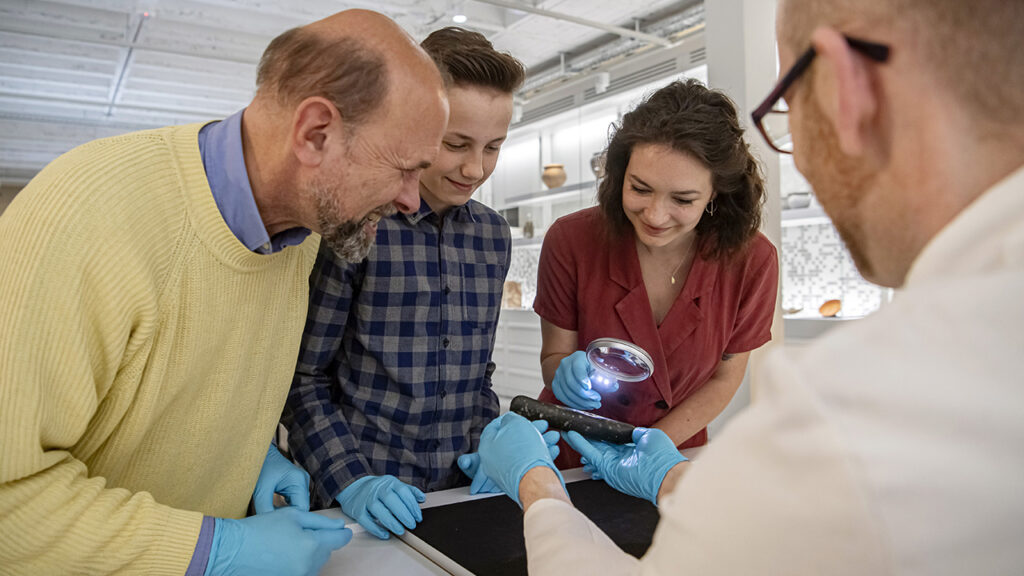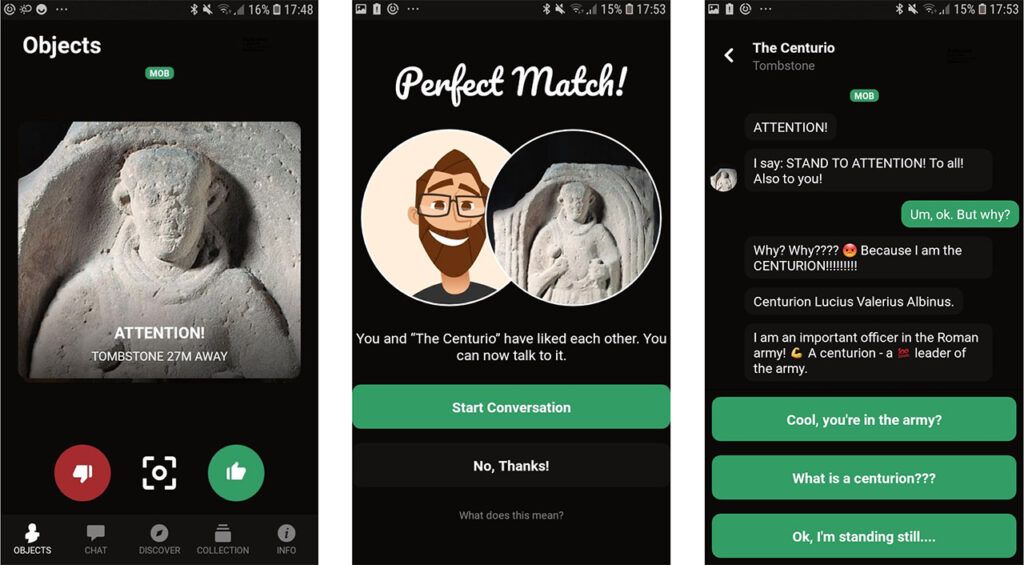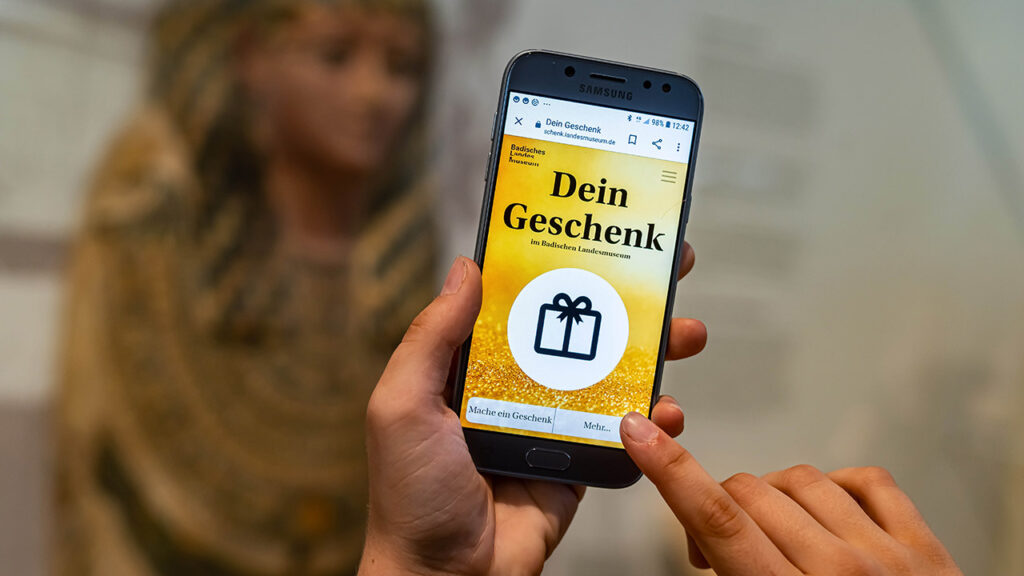The Baden State Museum may be housed within the walls of the historic Karlsruhe Palace, the 18th century structure that gave the German city of Karlsruhe its name and center, but the institution has its eye firmly fixed on the future. It’s there, amid cultural relics that date back to the Roman Empire, that Christiane Lindner is laying the groundwork for what Baden dubs museum x.0.
“We’re creating something where the digital and the analog experiences are really intertwined,” the Project Lead of museum x.0 tells Jing Culture & Commerce. “We have the physical museum and the digital platform, and we’re building apps and modules to enable both, to create a museum that at its core is a place for dialogue and debate.”
Such a transformation has been prompted by two factors: an upcoming renovation that will shut the museum’s physical site and of course, the pandemic. So while the total experience of museum x.0 will only be unveiled later this year, its outline, hastened by lockdown restrictions, is already taking shape.

At Archaeology at Baden, museum users could schedule opportunities to handle and closely inspect exhibits. Image: ARTIS – Uli Deck © Badisches Landesmuseum
For starters, the Baden State Museum is currently engaged in “redefining our visitors as active users,” according to Digital Manager Johannes Bernhardt. In other words, just as how they might sign up for Facebook, visitors can now sign up for user accounts with the museum for a yearly fee. With their user IDs, visitors can gain entry to the institution, access special exhibition features, and keep track of favorited objects. This further allows the institution to collect data to personalize visits and enhance visitor experience. At 2019’s Archaeology in Baden, for example, museum users could call up additional information about exhibits, which shows up via augmented reality on their mobile phones, and even handle actual artifacts.
“User behaviors have changed dramatically, especially in the last 10 years,” says Bernhardt. “We are experimenting with a lot of different approaches to our collections to enable new ways of access and interactions.”
Centering the user
User-focused approaches are practiced in most institutions, but Baden State Museum has been finessing its audience strategy with direct contributions from its visitors. In 2018, it launched a Citizens’ Council, an assembly of museum-goers that allows the institution insight into the mindsets of present and future consumers. A tangible outcome of these advisory group sessions? The museum’s upcoming mobile application, Ping! The Museum App.

On Ping! The Museum App, users can find, match, and engage with objects through scripted conversations. Image: Christiane Lindner © Badisches Landesmuseum
Borne out of council members’ desire to closely interact with objects in the museum’s holdings, Ping! borrows the swipe-right-or-left conceit of dating apps to pair players with any of the 80 to 90 artifacts on the platform. Basically, “it’s Tinder for objects,” as Lindner puts it. Once matched, users can initiate conversations with the object (or more specifically, a chatbot) and perhaps arrange an in-person meet-up. These engagements don’t simply offer users fresh, playful ways to get acquainted with the museum’s collection, but allow them to form emotional bonds with select objects.
The prototype for Ping! was originally created for Humboldt Forum, and in a collaboration with both the Berlin institution and the app’s developers, Baden State Museum has added further refinements. Chief among them was the development of the scripted chats between user and object. It was “a huge process,” says Bernhardt, that entailed devising personalities for the artifacts, creating massive dialogue trees focused on engagement and education, and testing the results with the Citizens’ Council and other museum departments. The sum, he adds, “is a really polyphonic project” built on the active involvement and participation of diverse voices.
Currently still in beta, Ping! is set for wide release as soon as the museum fully reopens in the summer of 2021. But already, Lindner and Bernhardt foresee the possibilities of evolving the app’s content to ensure its continued relevance. Say, if a pandemic struck the planet, the museum could easily load a batch of pandemic-related objects onto the platform and build conversation trees around the topic in ways that will resonate with users. “It won’t take the two years it does to plan an exhibition; you can do it in two weeks,” says Bernhardt. “The tool has a lot of potential for rapid response and rapid reaction.”
Meeting the moment

Released over lockdown, the Your Gift mobile app invited users to pick, curate, and share the museum’s objects. Image: ARTIS – Uli Deck, © Badisches Landesmuseum
“Rapid response” is Bernhardt and Lindner’s shorthand for the spontaneous projects Baden initiated as COVID-19 locked us all down in the past year. Cases in point: its popular Coffee With Colleagues series of podcasts, which offered listeners a peek behind the scenes at Baden through interviews with museum staff members; and Your Gift, a mobile app released last summer that invited users to curate personal collections with objects from the institution’s archives, then share them with friends and family.
For Lindner, such responses should be a linchpin in cultural institutions’ content strategy to better meet the contemporary moment. She cites a tongue-in-cheek video the museum released last year as a rejoinder to Germany’s “toilet paper shortage.” Instead of consuming toilet paper, the video, with help from Dr. Schoole Mostafawy, Baden’s Curator of Global Art History, floated the use of an “aftabeh,” an Iranian bathroom pitcher and a specimen of which happens to live in the museum’s archive. The video promptly went viral because as Lindner notes, “it was just the right thing for the right time.”
Planning and executing Baden State Museum’s lockdown programming, Lindner and Bernhardt agree, have bred a more agile and communicative team, and enriched their thinking about the museum’s onsite-online offer. “Digital now has a different place in museum work,” says Bernhardt, who, as the institution presses toward x.0, continues to deliberate, “How can the digital museum experience be designed as a complement to the physical museum?” Now as always at Baden, it’s an ongoing dialogue.



